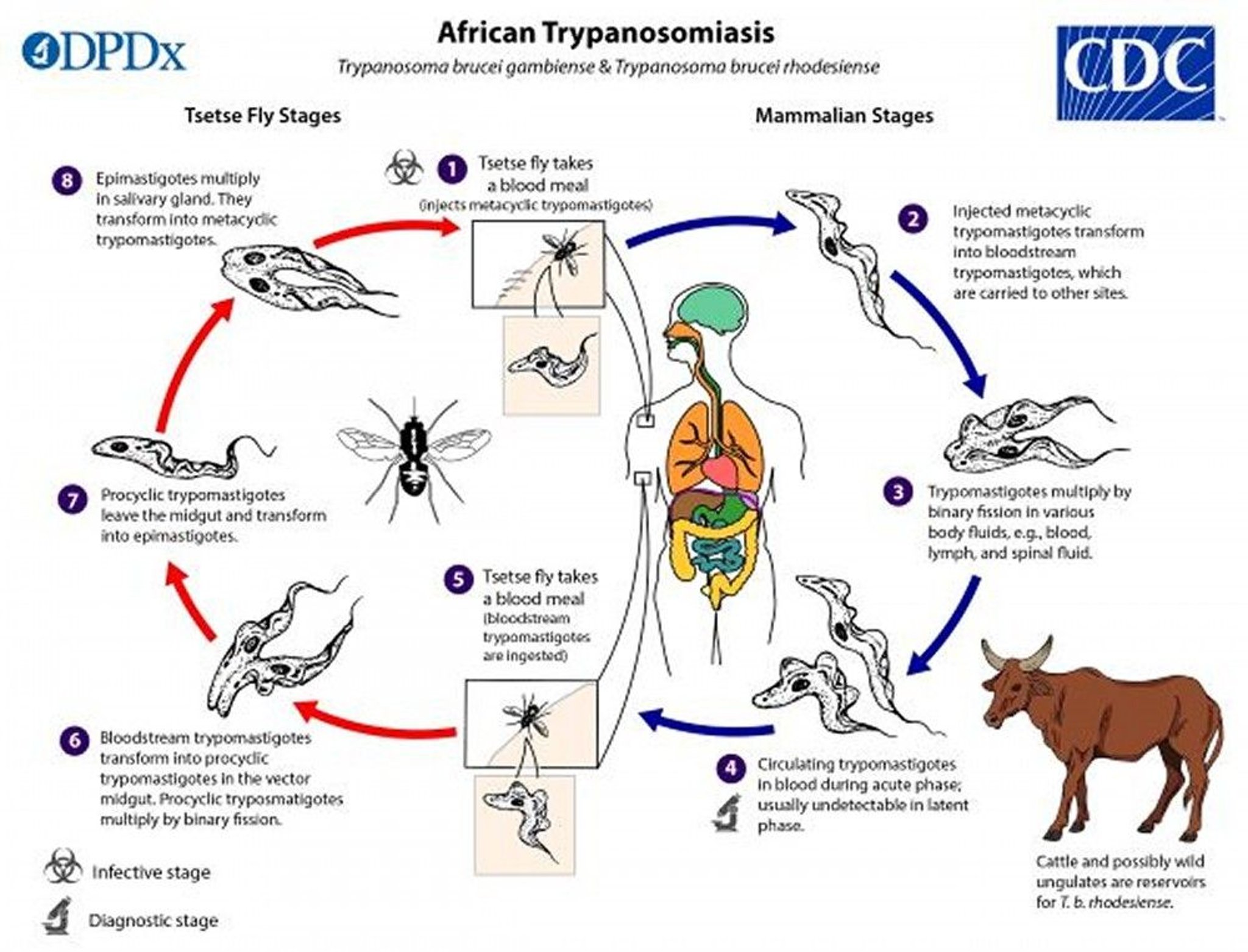Life Cycle of Trypanosoma brucei gambiense and Trypanosoma brucei rhodesiense
1. When an infected tsetse fly bites a person (or animal), it injects a form of the protozoa that can cause infection (called trypomastigotes) into the skin. The protozoa move to the lymphatic system and bloodstream.
2. Inside the person, they change forms and travel to organs and tissues throughout the body, including lymph and spinal fluid.
3. The protozoa multiply in the bloodstream and other body fluids.
4. They circulate in the bloodstream.
5. A fly ingests the protozoa when it bites an infected person.
6. Inside the fly, the protozoa change forms and multiply.
7–8. The protozoa travel to the fly's salivary glands, multiply, and change into trypomastigotes—the form that is injected when the fly bites a person.
Image from the Centers for Disease Control and Prevention, Global Health, Division of Parasitic Diseases and Malaria.

